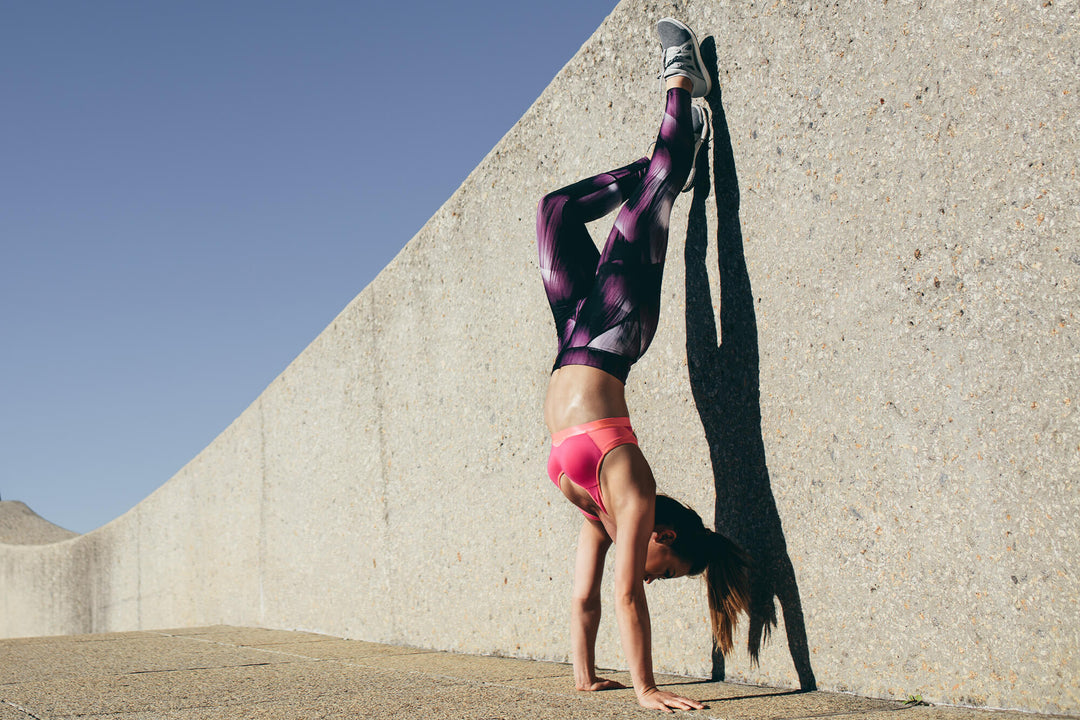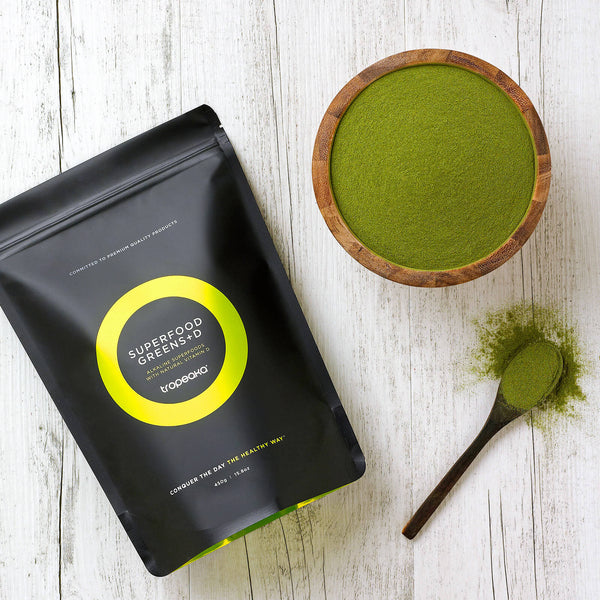While calisthenics pros make inversions look effortless, handstands are one of the most intimidating bodyweight exercises to learn. However, they can also be one of the most fun and rewarding.
I
t’s common to get frustrated and give up too soon, but staying motivated on your handstand journey is much easier when you know the very practical health benefits that come with refining this skill.
Here are 11 practical reasons to practice handstands.
1
Strengthen your entire body
While they are especially great for developing your shoulder and upper body strength, handstands engage every part of your body, from your gripped fingertips to your pointed toes. In addition to working your arms, shoulders, and upper back, staying balanced on your hands also works your abs, lower back, hip flexors, obliques, inner thighs, hamstrings, glutes and spinal muscles.

In short, handstands are great for your core strength because each muscle group works together as a unit to prevent you from falling over.
Handstand practice might help prevent injuries and osteoporosis in the future
2
Strengthen your bones
Not only does handstand practice improve the health of your spine, but this weight-bearing exercise can strengthen and improve the bone mineral density of your wrists, fingers, elbows, arms and shoulders in a way that no other exercise can. More than just an impressive party trick, your handstand practice might help prevent injuries and osteoporosis in the future.
3
Improve your spatial awareness, balance and coordination
Unless you're already used to seeing the world upside-down, your first few handstand attempts may be pretty disorienting. After a while, the brain adapts, and your spatial awareness, balance and coordination improve.
When learning to handstand, you will fall – even seasoned hand-balancers fall from time to time. Fortunately, your reflexes will improve in the process and you'll get good at falling without hurting yourself.
Not only do handstands make you stronger and more coordinated, but they also improve your mood and brain function
4
Improve your mood and brain function
Not only do handstands make you stronger and more coordinated, but they also improve your mood and brain function. Since balancing in a handstand requires you to focus on your breathing and be fully present in your body, this practice puts you in ‘the zone.’ When balancing upside-down requires your full attention, there’s no room left for negative thoughts.

Your normal blood flow also inverts when you’re upside down, which increases circulation to your upper body and brain. This extra blood flow to the brain improves focus and cognitive function while lowering the production of cortisol. The effect is calming and energising, so handstands are a great tool when you’re feeling down, bored or anxious.
5
Develop patience and self-compassion
Since handstands are far from easy, they can take a long time to learn. It's a skill that requires consistency and perseverance through frustrating plateaus, and the only way to get there is with patience and self-compassion. In an age of instant gratification, constant comparison, and short attention spans, handstands are a very practical and valuable pastime.
6
Breathe better
Your primary breathing muscle is called the diaphragm, and it gets a fabulous stretch during a handstand. As blood flow to your lungs also increases while you're upside down, handstand practice could help you breathe deeper and more easily while keeping your lungs in good health.
7
Regulate your hormones and metabolism
As the pituitary gland is stimulated by all the extra blood flow to the head, spending time upside-down is also great for your endocrine system. In addition to maintaining the ‘set point’ for your weight, the pituitary gland is known as the ‘master gland’ because it regulates all the other hormone-secreting glands in the body.
This includes the adrenal and thyroid glands, which are also stimulated by handstand practice. Located in your throat, the thyroid also gets more blood flow during a handstand, which helps regulate your metabolism through the production of T3 and T4.
8
Reverse the damage from sitting too long
Some of the dangers of sitting too much include organ damage, muscle loss and weakening of the bones. Long periods of sitting at a desk in front of a computer can also hinder your mental health.

Simply standing up and moving around regularly throughout the day can reverse this damage, but adding in a few handstands is even better. Even if you can't stay upside-down for long, inverting yourself redistributes blood to the parts of your body that miss out on vital nutrients while you sit.
Gains in mental strength are another practical benefit of handstands
9
Gain mental strength
As they force you to come face-to-face with your fears and insecurities, gains in mental strength are another practical benefit of handstands. Whether you're scared of falling or you're afraid you'll never catch your balance, committing to your handstand practice is an exercise in mental resilience.
Confronting your fears helps build self-confidence and courage, and handstands are an excellent tool for developing a curious and playful approach to solving problems and overcoming challenges
10
Improve your digestion
Although the many benefits of better gut health are well known, we don’t often hear how helpful handstands can be to the body's waste elimination processes. During a handstand, the large and small intestines are inverted, allowing gravity to work its magic on any stuck waste and trapped gas. The inversion also puts pressure on the ileocecal valve, prompting detoxification and bacterial balance.
11
Play and have fun
Having fun is vital for your health, and adults need time for play just as much as children do. As difficult as they are, there’s something very child-like about handstands. Being upside-down lightens the mood, and handstand practice feels more like play than exercise. If your workouts are becoming tedious, have some fun with handstand drills.

Consistency is key, and patience is paramount!
As babies, it takes us around 12 months of daily conditioning and practice to start standing independently. Approach your handstand practice with this in mind, and be sure to learn the correct technique and essential warm ups!





